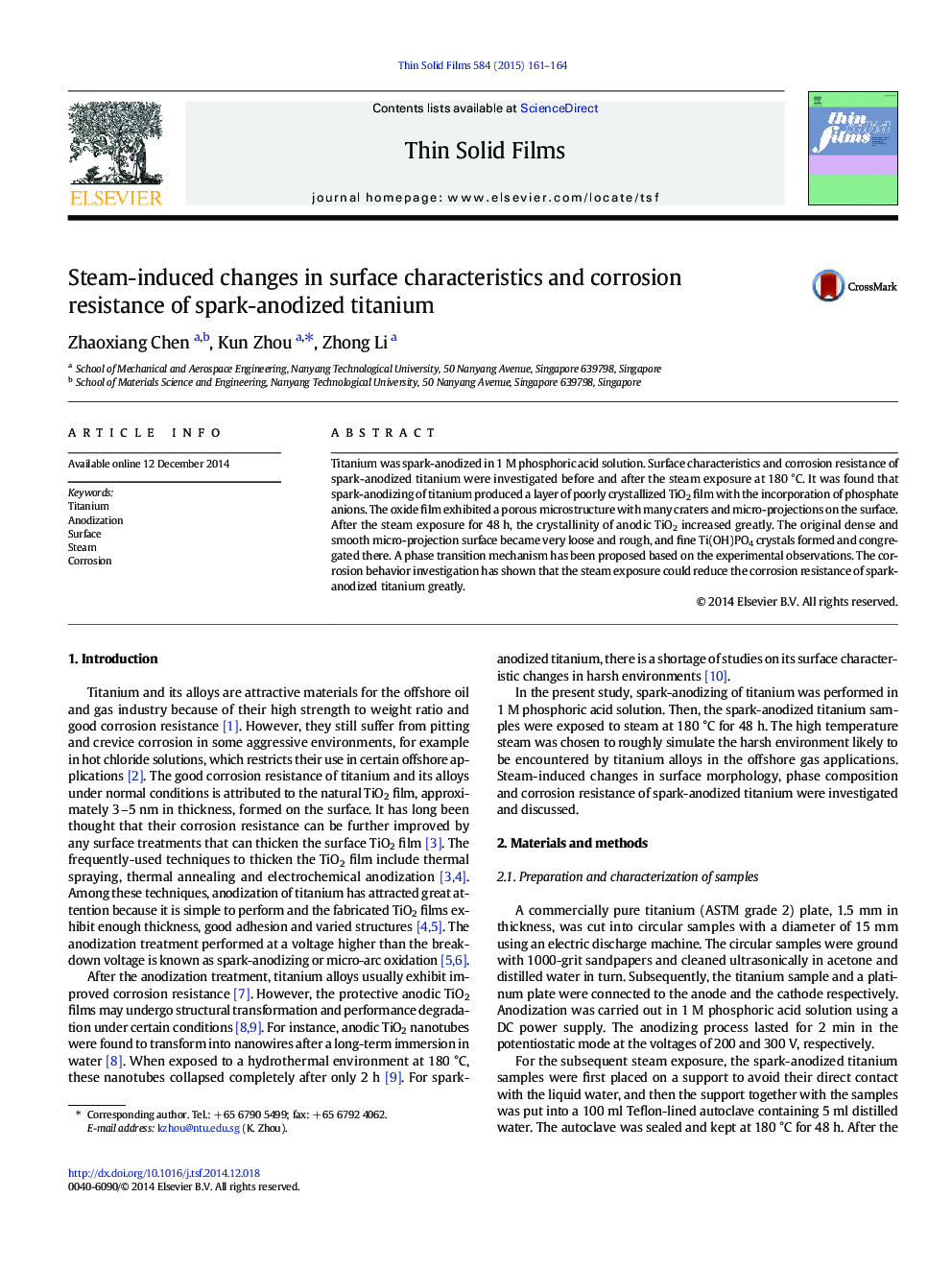| Article ID | Journal | Published Year | Pages | File Type |
|---|---|---|---|---|
| 1664844 | Thin Solid Films | 2015 | 4 Pages |
•The oxide surface became loose and rough after the steam exposure.•The steam exposure resulted in the formation of Ti(OH)PO4.•The anodic TiO2 increased its crystallinity after the steam exposure.•The steam exposure reduced the corrosion resistance of spark-anodized titanium.
Titanium was spark-anodized in 1 M phosphoric acid solution. Surface characteristics and corrosion resistance of spark-anodized titanium were investigated before and after the steam exposure at 180 °C. It was found that spark-anodizing of titanium produced a layer of poorly crystallized TiO2 film with the incorporation of phosphate anions. The oxide film exhibited a porous microstructure with many craters and micro-projections on the surface. After the steam exposure for 48 h, the crystallinity of anodic TiO2 increased greatly. The original dense and smooth micro-projection surface became very loose and rough, and fine Ti(OH)PO4 crystals formed and congregated there. A phase transition mechanism has been proposed based on the experimental observations. The corrosion behavior investigation has shown that the steam exposure could reduce the corrosion resistance of spark-anodized titanium greatly.
